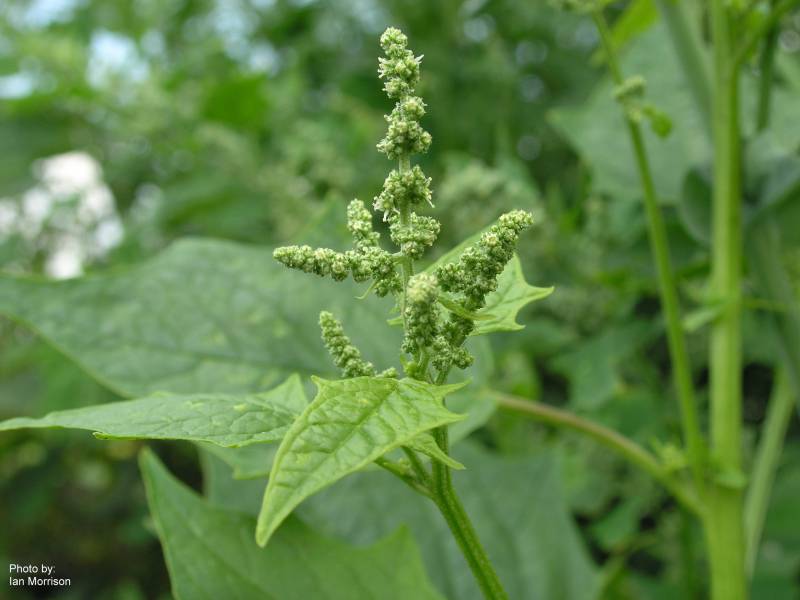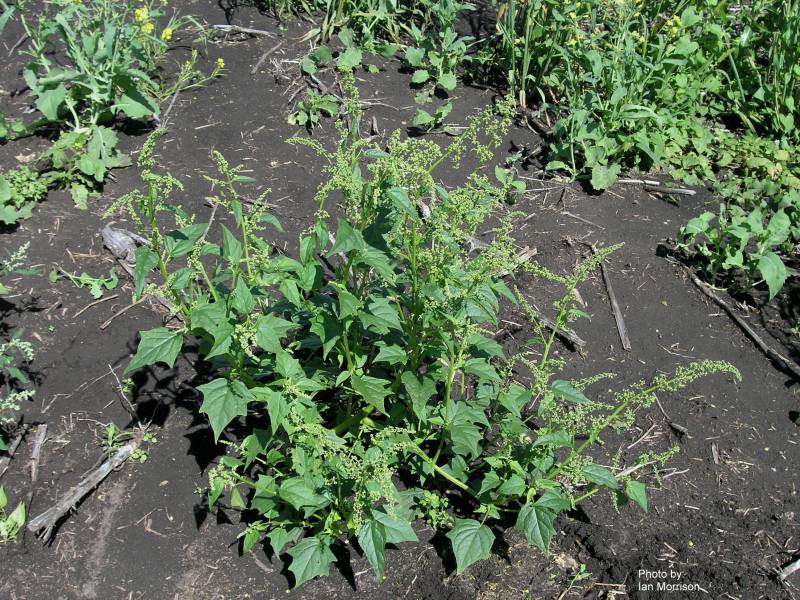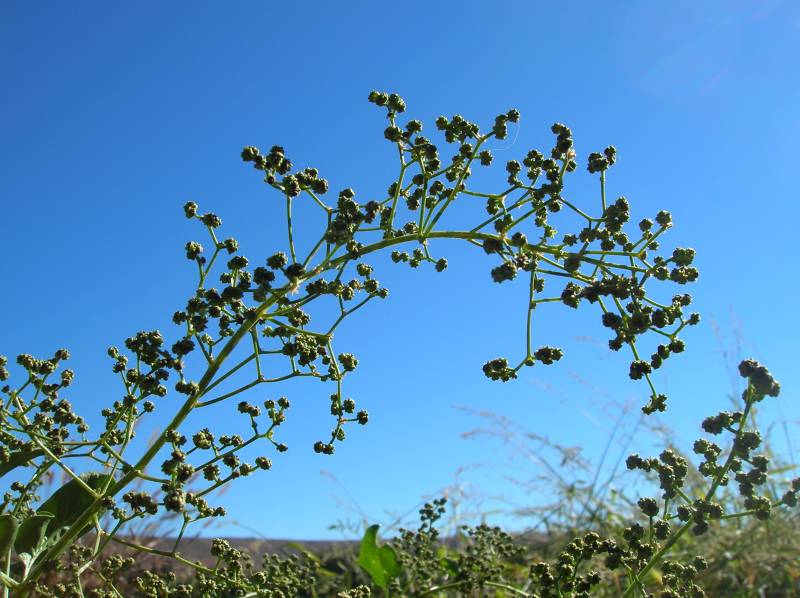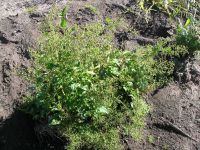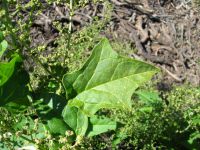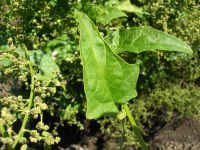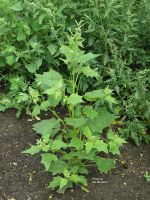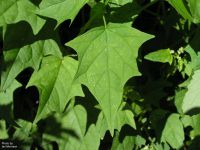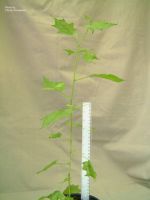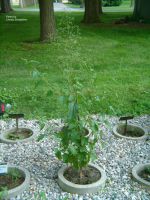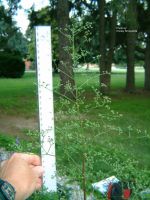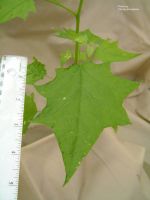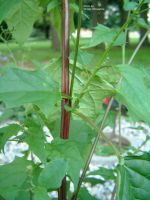Distribution: Occurring east of the Cascades crest in Washington; British Columbia to Nevada, east across much of North America to the Atlantic Coast.
Habitat: Fields, forest edge, roadsides, wastelots, and other disturbed areas.
Flowers: June-September
Origin: Native
Growth Duration: Annual
Conservation Status: Not of concern
Pollination: Wind
Erect, simple to freely-branched annual, 2-15 dm. tall, glabrous except in the inflorescence.
Leaves alternate, the blades thin, broadly deltoid-ovate to ovate, up to 20 cm. long, acuminate at the tip and rounded to nearly cordate at the base, the margins wavy, with 2-4 rounded-triangular teeth; the upper leaves reduced and nearly entire, all narrowed abruptly to short, slender petioles.
Flowers sessile, glomerate in large, terminal panicles, sometimes also in reduced lateral spikes or panicles, all often glandular; perianth 5-cleft nearly to the base, the segments ovate to oblong, not strongly keeled; stamens 5, opposite the perianth parts; styles 2.
Utricle 1.5-2 mm. long, the wall adherent to the seed.
Publication: Willdenowia 42(1): 14. 2012.
Chenopodium gigantospermum Aellen
Chenopodium hybridum L. var. gigantospermum (Aellen) Rouleau
Chenopodium hybridum L. var. simplex Torr.
Chenopodium simplex (Torr.) Raf. [FNA4]
PNW Herbaria: Specimen records of Chenopodiastrum simplex in the Consortium of Pacific Northwest Herbaria database
WA Flora Checklist: Chenopodiastrum simplex checklist entry
OregonFlora: Chenopodiastrum simplex information
E-Flora BC: Chenopodiastrum simplex atlas page
CalPhotos: Chenopodiastrum simplex photos

